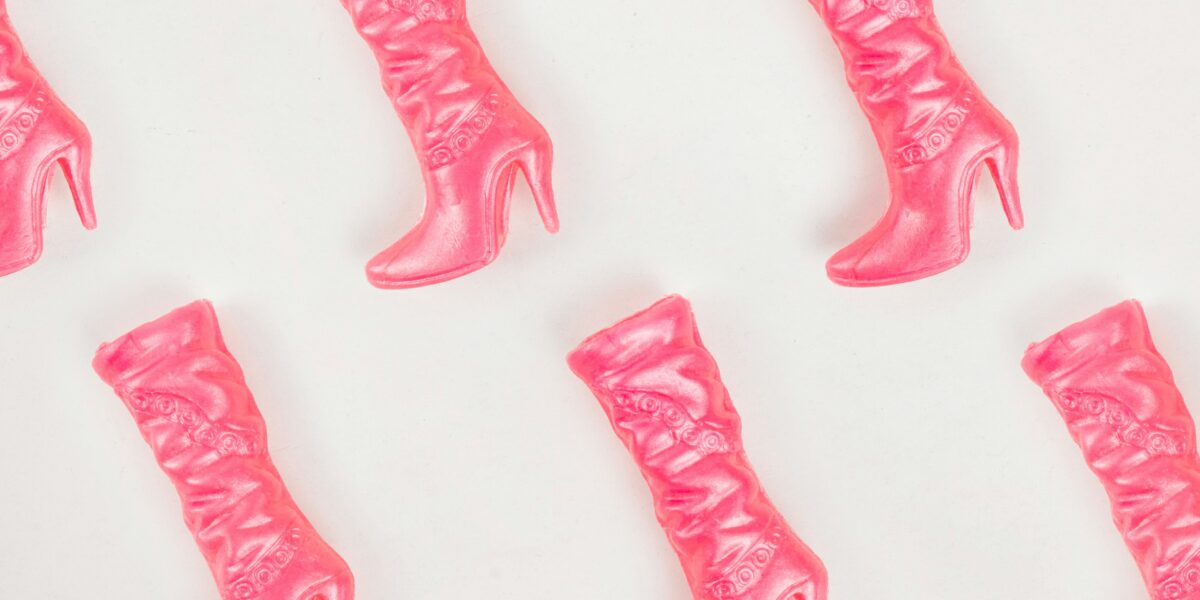Did 2023 leave you feeling like a Barbie girl in a Barbie world? You didn’t need rose-tinted glasses to see the world turn pink. From global pink paint shortages as the Barbie set was built, to the rise of ‘bimbo-core’ and hyperfeminine aesthetics on TikTok, pink is everywhere. This fuchsia tidal wave, powered by nostalgia and virality, has embedded itself in the cultural zeitgeist. But it’s not just a colour; pink is political. Globally, people have found a sense of both personal identity and collective community in embracing a brighter, pinker world. Whether it’s hordes of fans turning up to the cinema in a mutually agreed Barbie uniform or getting your hands on a coveted pink Stanley Cup, marketing campaigns riding the pink wave have developed a magnetic brand identity.
But what is it about pink that makes it oh so irresistible? It’s a colour laden with cultural significance. Pink remains semiotically intertwined with gender – women wear pink shirts while men wear salmon. These pink ‘girly’ associations often carry misogynistic tropes of frailty and ditziness, which have historically leaked into regrettable marketing campaigns – the notorious ‘pink it, then shrink it’ approach. From 2009’s “Della” laptop (which had in-built shortcuts to find recipes and count calories), to the biro “for her” called Miss Bic.
A key issue is when pink is prescriptive and purposeless: I don’t want to buy something pink if it’s the only option for me, simply because I’m a woman. And I certainly don’t want to have to pay more for that ‘luxury’ – an NYC Department of Consumer Affairs’ analysis of 800 products found that women pay approximately 7% more than men for similar items.
Pink is not a strategy. Time and time again brands, attempting to draw women in, neatly wrap their offering in a magenta bow and pronounce – see? It’s for you now! So why has pink enjoyed such a renaissance in the past year? ‘Marketing to Women’ author Marti Barletta points out that “anything that says ‘you women’ is going to get backlash.” Barbie, for example, rescopes their appeal by saying “we women.” This year’s Mean Girls reboot has similarly enraptured Gen Z because of how delightfully subversive it is. Yes, they wear pink on Wednesday’s but they’re not cutesy or kind – they’re horrible to each other.
While this plays out on the big screen, we’re seeing a shift on small screens too. The girl-ification of TikTok has skyrocketed – from girl dinner (basically a ‘picky-bits’ meal) to girl maths (cost per wear justification on steroids), people have found connection and community in talking about the ritual routines of girlhood. A delightful moment of feeling seen – an ‘omg I do that too’ moment. Brands have been quick to jump on the trend – Popeyes launched a girl dinner menu, comprised of their side dishes. They were the first to use the term in a commercial setting and although initially well received, critics quickly swooped in, feeling that “the meal is a form of misogyny,” citing the lack of protein and measly portion sizes.
The response is a learning for brands; a singular trend cannot be the bedrock of a robust strategy. It’s important to understand the purpose of wading into a conversation – why our brand, why now and what are we trying to say? So if you’re going pink – go pink with purpose. Although trends spread like wildfire on TikTok, people retain scepticism around brands leaping into conversations and commercialising something that ultimately feels personal. Sometimes – girls just want to have fun, not to be sold something. Especially if it’s pink.


